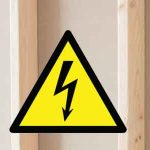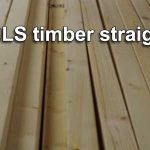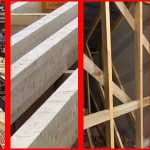Mould growing on timber is quite common. It happens when the moisture content of the wood is too high. This can lead to mould forming on its surface.
Mould spores can be found in most environments and when they come in contact with wet timber, this is an ideal place for growth.
A mould spore is essentially an airborne seed. When they land on a surface where moisture is present, they are able to start growing and forming mould. On a wet surface, such as a piece of timber, this can spread.

Mould can grow on any type of wood. It doesn’t even matter if the wood is kiln dried, or pressure treated. All the mould needs, is a moisture content above roughly 18% and this will provide a good environment for growth.
Most commonly, mould on wood is black, or dark green. Occasionally, you will also see white fluffy moulds forming on timber. The darker moulds in particular can be very unsightly and may stain the wood. This can be a nuisance to remove, and you may need to use a little elbow grease.
To help clean the mould you can use distilled white vinegar, or a decent mould spray will usually do the trick. You can see a popular household mould spray, that will do the job by clicking here
Will mould damage timber
The good news when it comes to mould, is that it’s a surface issue. The mould only grows on the face of the timber, it does not penetrate the wood and cause it to decay.
This means, that once it has been sufficiently cleaned and dried, there will be no damage to the wood.
With that said, moist timber is the perfect breeding ground for other potential problems. These include:
- Wet and dry rot – Just like mould rot spreads via spores. However, this is extremely damaging to timber. The rot can spread throughout the timber, feeding off nutrients in the wood. Both dry and wet rot can completely destroy timber, with wet rot being the most pervasive of the two.
This is less common in treated timbers, as the treatment is poisonous to the rot. However, as the timber ages and the treatment wears out the risk increases. - Woodworm – wood burrowing insects such as woodworm can cause serious damage to timber. They are attracted to moist, soft wood, and will burrow deep into the timber to lay eggs. Over time this can result in serious damage.
However, similar to rot, woodworm does not like treated timber. Therefore you do have less risk of this type of infestation in a pressure treated piece of wood.
As you can see, whilst mould only effects the surface of your wood, there are things that can cause much more damage. Rot and woodworm will thrive in similar situations, but they will cause much more damage.
The risk of any issues from mould, rot, or woodworm is greatly decrease when the wood has a lower moisture content.
How to prevent mould on timber
As with most things, it does make sense to prevent the problem before I happens. To avoid mould on timber, the main thing is to keep it dry.
Mould will not grow on timber with a low moisture content. Even if mould spores are present, they will need the right conditions to grow.
Inside the home, the main cause of mould is high levels of moisture in the air. This will cause mould to form on any surfaces including wood.
The best way to avoid this, is to extract moisture and reduce relative humidity. This can be done by simply opening windows, letting fresh air in, and moist air out.
You can also use things like extractor fans and dehumidifiers to remove moisture from the air.
For timber that is used outdoors, like garden furniture and decking, the best way to reduce mould is to use a treated timber. Mould can still grow on treated timber, but it does add some protection. Also, it will avoid bigger problems like woodworm and rot.
If you are storing timber for projects, or even things like firewood, you can avoid mould by stacking correctly. The way to do this is by providing good airflow around the wood.
For lengths of timber this could mean using lat spacers between the timbers. As well as gaps all around and below.
For firewood, a decent log store with plenty of gaps for air to circulate is a very wise choice. You can see a great DIY log store with free plans here.
Conclusion
Timber can quite easily get mouldy if the right conditions are present. The main cause of this, is high moisture content. Therefore, reducing the moisture in wood, will eliminate this problem.
Whilst mould is not a serious problem for wood, it does mean that other more serious problems such as rot and woodworm, could also be attracted. A treated timber will protect against more serious issues. However, if the problem is internal, it is a clear sign that you need to reduce moisture and dry out the internal wood.




